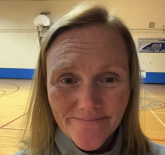Ready, Set, Go: 5 Tips From a PE Teacher for the New School Year
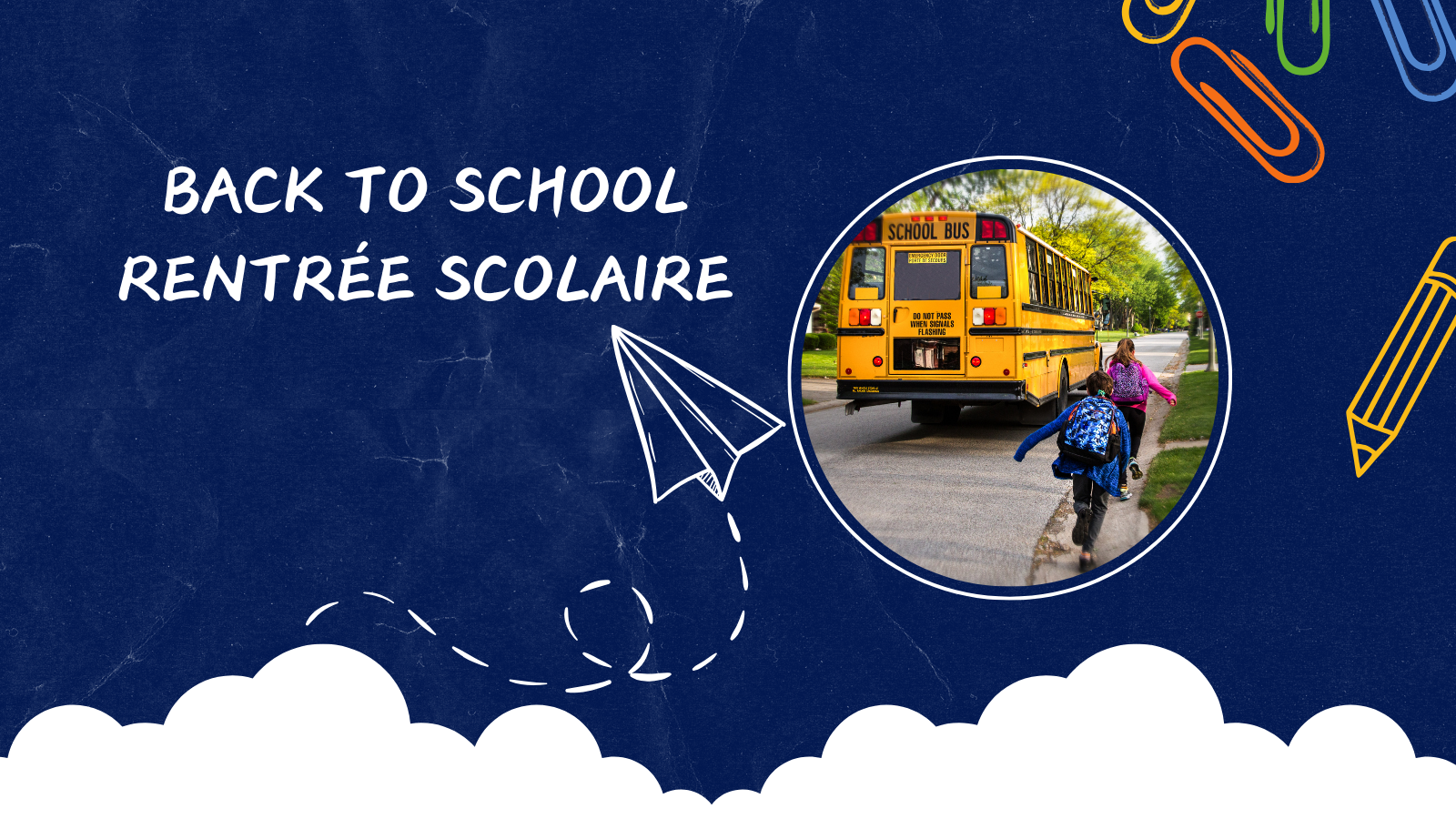
And just like that, summer vacation has come to a resounding halt and teachers are back in classrooms getting ready to welcome students! Every year it is remarkable how July seems to meander by and how August rolls by full throttle. Regardless of how slowly or quickly vacation has come and gone, one thing remains constant in the PHE teacher world – prepping for back-to-school start-up. Every year, we make our to-do lists, try to stay organized, and ensure that everything we need to accomplish prior to our students’ arrival gets crossed off the list.
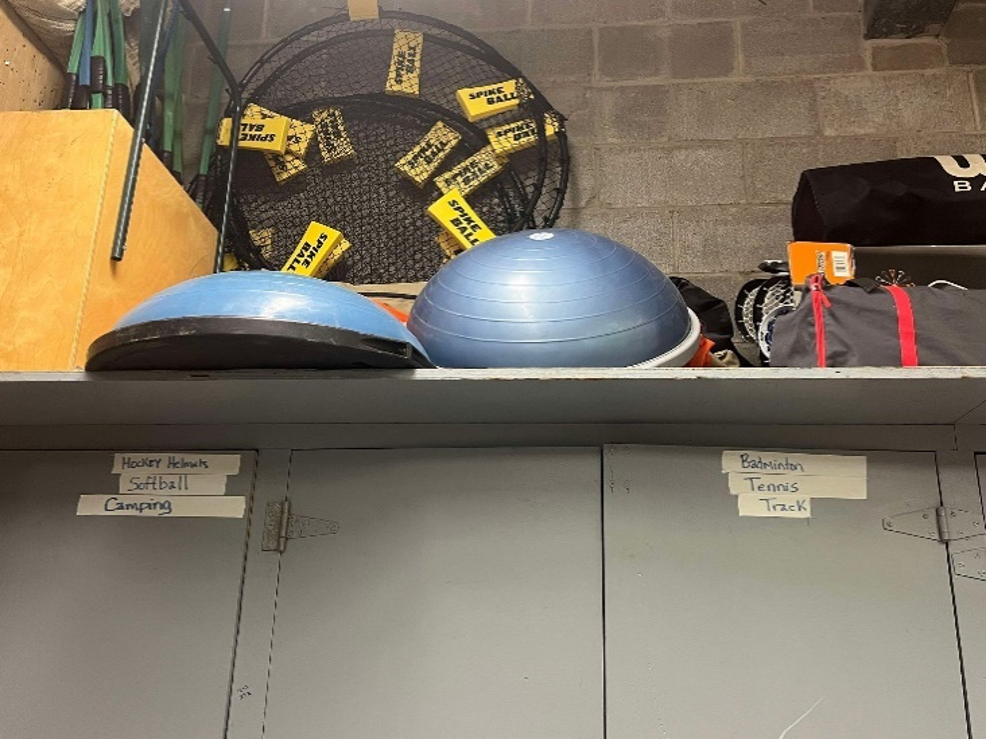
Inevitably, every year, we don’t have enough time and are left scrambling on the weekend before the students return to get that to-do list completed. While I am not an expert organizer, I’ve learned a lot over my nearly two decades as a PE teacher across all grade levels. Now, as the Physical Education and Wellness Lead for the Anglophone School District North in New Brunswick, I wanted to provide the PHE community with some insightful tips and tricks that may help you get rolling for the new school year.
This list isn’t exhaustive, but it can help you stay on track and remind you that you're not alone in feeling overwhelmed by the new school year start-up process. While the workload may not decrease over time, your efficiency will improve—trust me, it really does happen!
Tip #1 – Organize your equipment room
If you are anything like me, I have a hard time working in an environment that is disorganized. I highly recommend designating the time to organize and go through your equipment room (maybe a full day depending on the state of your equipment room) before you even start to look at lesson plans – trust me! Here are my “go-to” tips for organizing the equipment room:
- Do an equipment inventory: When wanting to order additional equipment through grants or your school budget you need to take inventory (i.e., what you have, what you need, and what your wish list is).
- Don’t throw away – donate instead: Rather than discarding outdated or damaged equipment that needs slight repair (but is still safe to use), leave it out for a student to take who may not have the means to purchase that equipment. Understanding the needs and interests of your students helps build rapport and trust. Even a simple gesture like donating equipment can significantly strengthen that connection.
- Label cubbies, bins, and/or cupboards: When a supply teacher comes, you need a student to grab something, or you need to set-up and clean-up quickly this can save a lot of time. Everyone will be able to easily find the equipment AND put it back where it belongs.
- Have a team meeting with other PE teachers: Being on the same page regarding the expectations of the equipment room is essential, making it easier to work as a team and offer quality PE experiences to your students. Some equipment expectations to support smoother transitions and your lesson planning could include:
- replacing equipment after each use;
- having a common location to place broken equipment; and/or,
- having a clipboard where teachers write what equipment needs to be replaced/ordered.
Tip #2 – Set clear classroom norms and expectations

Establishing classroom norms and expectations that build an organized and structured environment for you and your students is key! I work best in environments that are structured – I do not thrive in chaos. And, in my years of experience, students (even though they will grump and groan) also work best in structured environments. Setting classroom norms and expectations for your PE class right off the bat can reap huge benefits later in the year. I also recommend revisiting them with your students from time to time in case your students say they “forget” …
There are a lot of “dos and don’ts” out there, as far as setting class expectations and behaviours, but at the end of the day you need to figure out what works for you and your students at your school. Additionally, what may work for one class, may not for another class. It is imperative that you get to know (the needs of) your students and know when to adjust the norms, if necessary. For example, when I had a class co-create the criteria for a softball throw, the result wasn't as detailed as I would have preferred, but the students felt heard and worked hard to meet the outcomes they had helped establish.
Whatever you decide to set as expectations and norms, be certain to communicate with other PE educators and your administration team at your school, so everyone is on the same page.
Here are some of my “go-to” expectations:
- Respect: equipment, peers, space, and teacher
- Be mindful of space
- Return equipment to its proper place after use
- No food in the gym
- Bring your own water bottle
- For safety purposes, comfortable PE attire and footwear (if feasible for students) are encouraged, but not mandatory
- Attempt all activities (not everyone will be stellar at all activities or skills, just do your best!)
- Have fun!
Tip #3 – No gym, no problem! (and check your first aid kits)
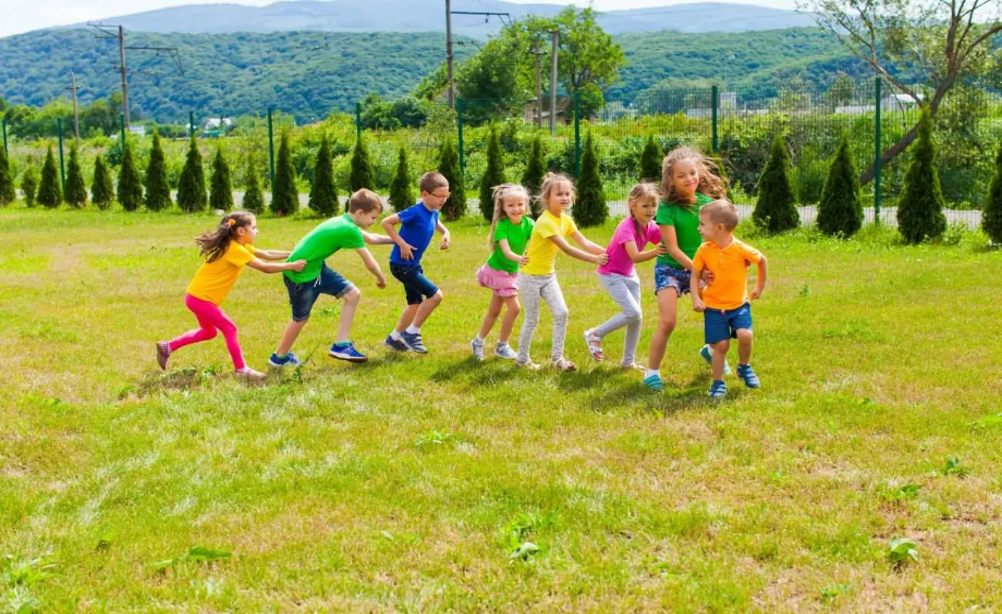
This one is, unfortunately, a reality for many of us in the PE world these days. Overcrowding, understaffing, lack of facilities, and assemblies (to name a few) can all impact your intended PE programming for one reason or another. Do not fret! Just because the gym may not be available does not mean that students cannot learn, and that you cannot teach. Hallways, classrooms, cafeterias can all be used to deliver PE programming in an indoor setting. Taking your students outside is always a great option too. In fact, getting your kiddos outside more often will yield great benefits for them physically, behaviorally, socially, and academically (Why movement is critical to learning, Kong, 2021). So, if you lose access to (or don’t have access to) a gym, fret not! With a little creativity you can deliver your lessons in alternate settings without a hitch. How?
- Set physical boundaries in these alternate settings. Students should know where they can access and where they cannot. Simple things like where students should go to use the washroom and get a drink of water can save time and future headaches. Use cones, pylons, pinnies, branches, etc. if needed to set the boundaries. If you are heading outside, you should use some type of device to get students’ attention if they are out of ear shot…whistles work great. Be patient – students need time to adapt to a different environment so give them time. Practicing routines for the great outdoors can be a key to success!
- Bring a first aid kit with you or be aware of where the closest one is located. The most stressful times can be when you’ve forgotten the first aid kit in the school when you are outside with students. It is ‘Murphy's law’ - those are the times when students injure themselves (knock on wood). There should be someone designated within the school to check first aid kits regularly. Be certain that your first aid kit is stocked, and you always have access to it. You can even make it part of your student to do list before you head out. Students love classroom jobs – assign a student to bring the first aid kit.
- Check out this PHE Journal article, Teacher to Teacher: Getting Creative When a Gym is Out of Commission, for additional activity ideas when the gymnasium isn’t available.
Tip #4 – Consult your curriculum guides (and ask for help!)
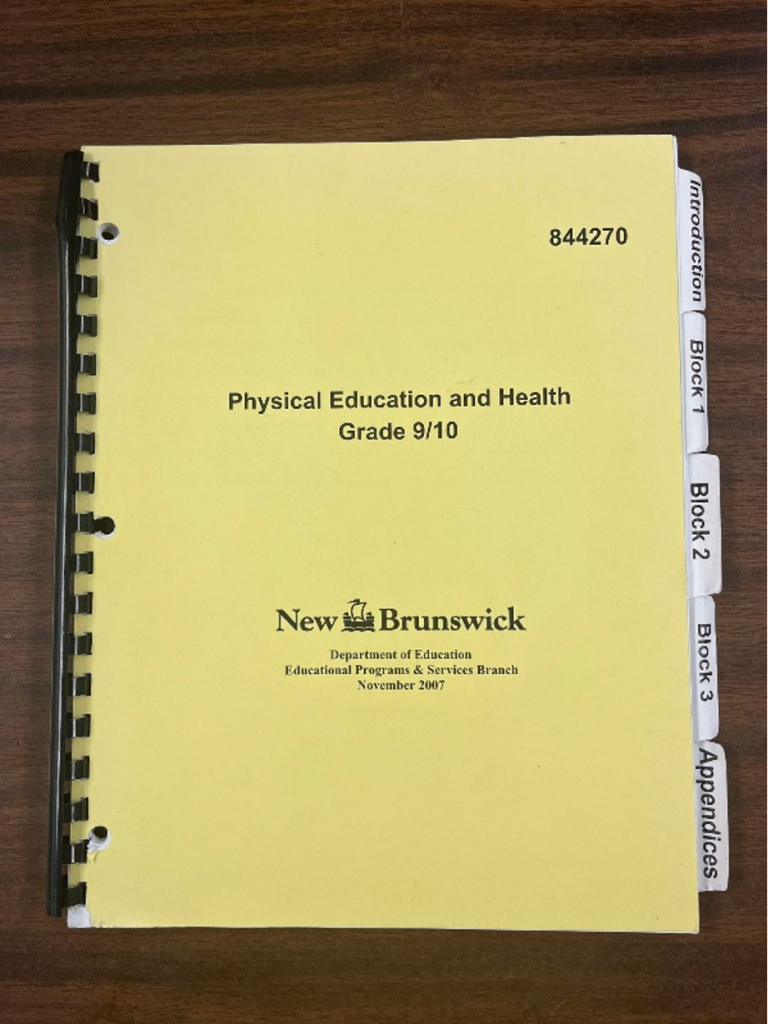
It sounds simple enough, but this is often overlooked. Do not forget to refresh your memory by looking at your curriculum guides and try provide diverse learning opportunities in your PE programming. Some curriculum guides have links to resources and activities that you can utilize to help with your planning.
For those who may be struggling to understand your curriculum guide, ask for help. Before you feel overwhelmed, be proactive with reaching out for support. Even if it’s at the beginning, middle, and/or end of year. Collaboration with others is what makes strong programs even better! When you are the only PE teacher in the building it is hard to know where to turn for help – but don’t worry, you are not alone! Here are some steps I’d recommend taking when it comes to accessing support:
- Ask your administration for help. Many school boards/districts/divisions have a designated PE coordinator that your administration team can connect you with.
- Consult with seasoned teachers, PE leads, coaches, department leads, or coordinator at a nearby school to help guide you – even if they are at different schools.
- Register as a mentee for PHE Canada’s (free) National Mentorship Program. This program matches mentors and mentees based on their goals, interests, lived-experiences, personalities, and more from all across Canada. As an emerging PHE leader, this program is great for heling you expand perspectives, increase knowledge, and gain pedagogical insights into wise practices in the world of PE.
- Check out the PHE Canada site for additional resources:
- E-learning opportunities: An Introduction or Models-Based Practice & Assessment in PHE
- Canadian Physical and Health Education Competencies – this document is intended to spark change and be a guiding light for those seeking to develop and deliver more inclusive, empowering, and meaningful PHE. In-Service Teachers can:
- Review the Competencies and incorporate as many of the big ideas and themes into your classroom.
- Compare your curricula to the Competencies and see where you may be able to better support your students.
- Develop assessment outcomes using the Wholistic Verb Wheel.
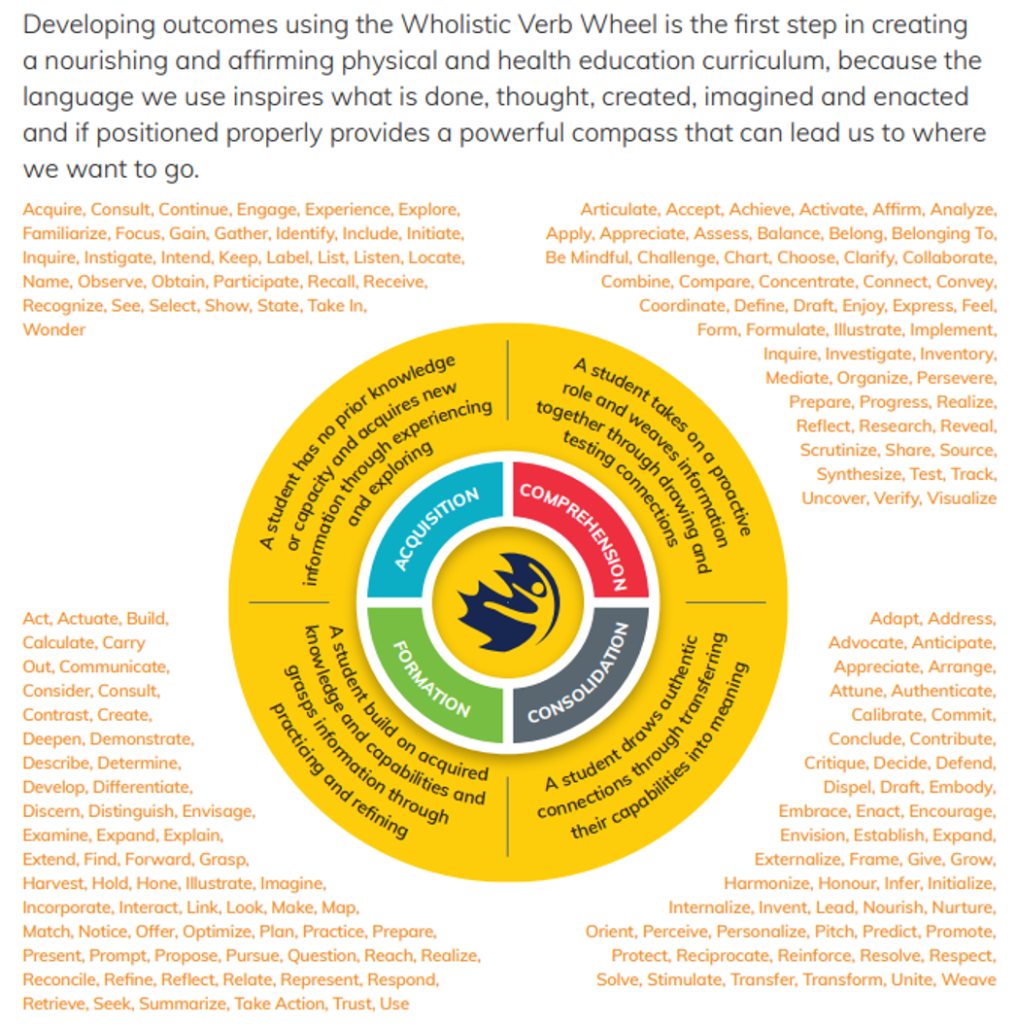
Tip #5 – Plan time for you!
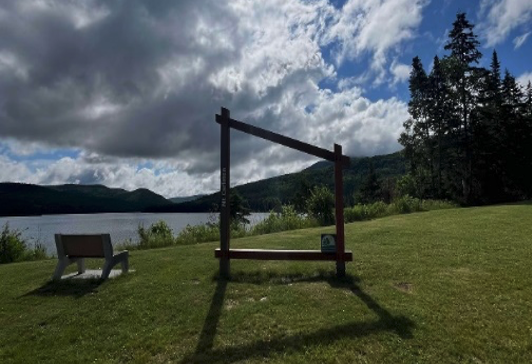
No, seriously. Plan time for you! PE teachers are notorious for putting themselves last; between teaching classes, organizing and ordering equipment, prepping fields, coaching a million teams… who has time for themselves during the school year? If I have learned anything over the past 19 years of teaching PE it is that you absolutely must take time for yourself. Your well-being should be a priority. Whatever you choose to do – walking, running, cycling, playing a sport, fishing, hiking, reading a book, knitting a scarf, etc. - make sure you schedule time to do it that works with your schedule. With everything you juggle as a PE teacher it can be quite easy to put everyone else first and neglect your own self-care. You need time to decompress. If you are unwell, you will not be able to be at your best for your students. Sorry, not sorry, for taking time for yourself!
Here are some self-care resources I recommend trying:
Verywell Mind - Offers a wealth of articles on mental health, self-care tips, and coping strategies.
Headspace - Offers guided meditations, mindfulness techniques, and sleep aids.
Mental Health Toolkit for Education Workers: A Resource – check out this article to learn how this bilingual virtual hub of high-quality resources aims to improve education worker mental health.
Teach Resiliency - an online portal and community of practice offering teachers simple-to-use strategies and tools to assess resilience needs and provide resources to promote and enhance teacher and student mental health.
Whether you are looking for supplies, equipment, PE teacher attire, or teaching resources, check out these links below that I’ve been collecting over the years to support my PE Programming:
- https://phecanada.ca
- https://www.teachervision.com
- https://thepegeek.com
- https://www.edutopia.org
- https://www.teachpe.com
- https://www.thephysicaleducator.com
- https://www.pecentral.org
- https://takemeoutside.ca
- https://www.outdoorplaycanada.ca/resources/?category=31
- https://www.outdoorplaycanada.ca/portfolio_page/outsideplay-ca
- https://www.playworks.org
- https://www.gonoodle.com
- https://www.shapeamerica.org
- https://www.tgogc.com
- https://outdoorclassroomproject.org
- https://www.activeforlife.com
Equipment, Supplies, and Attire:

